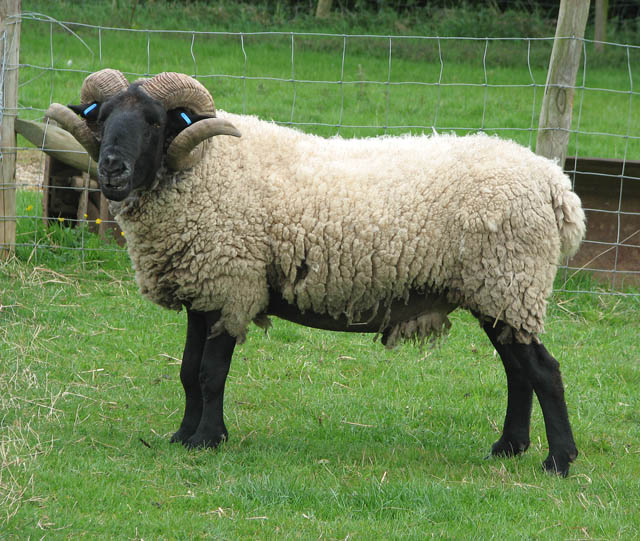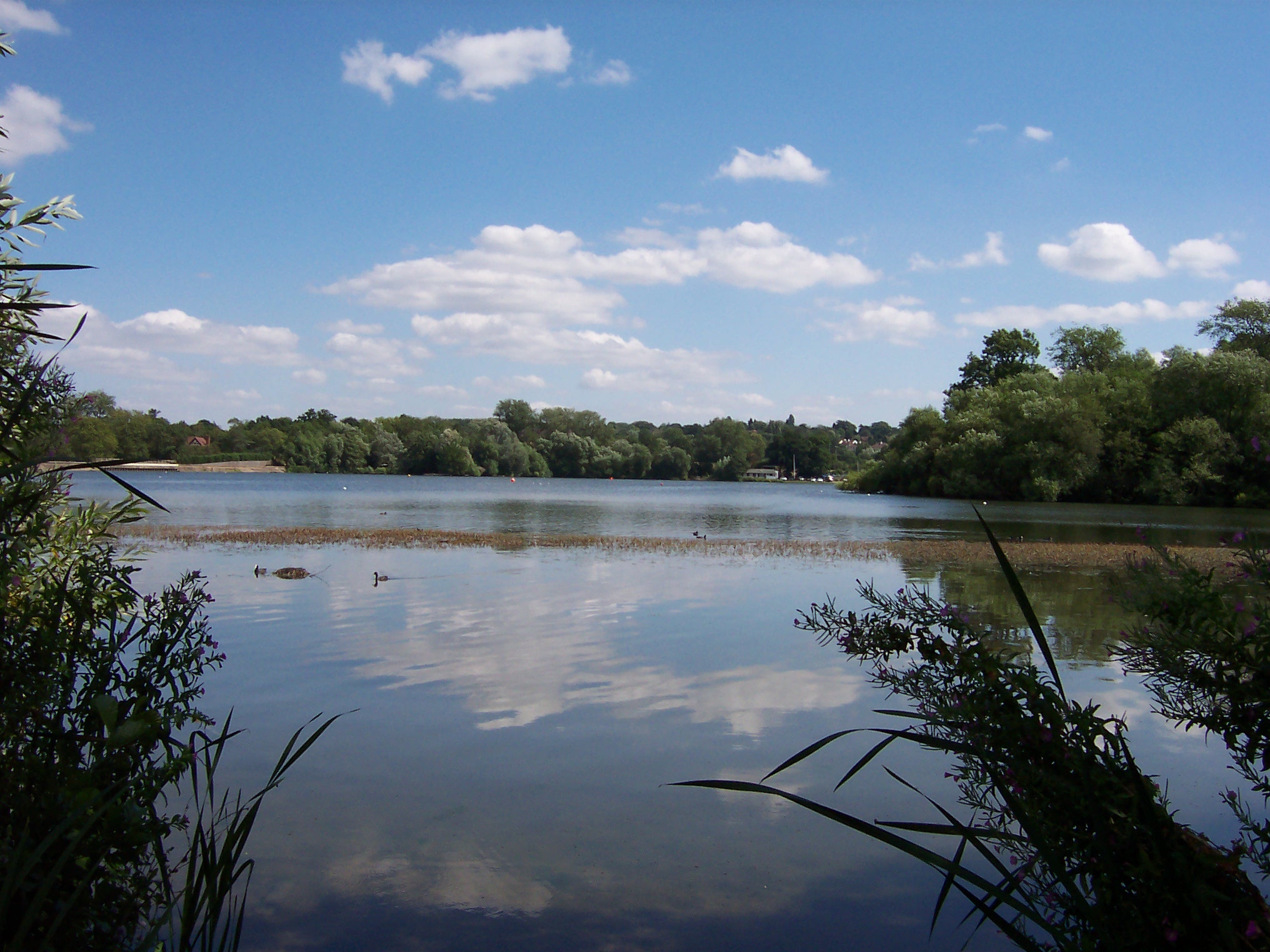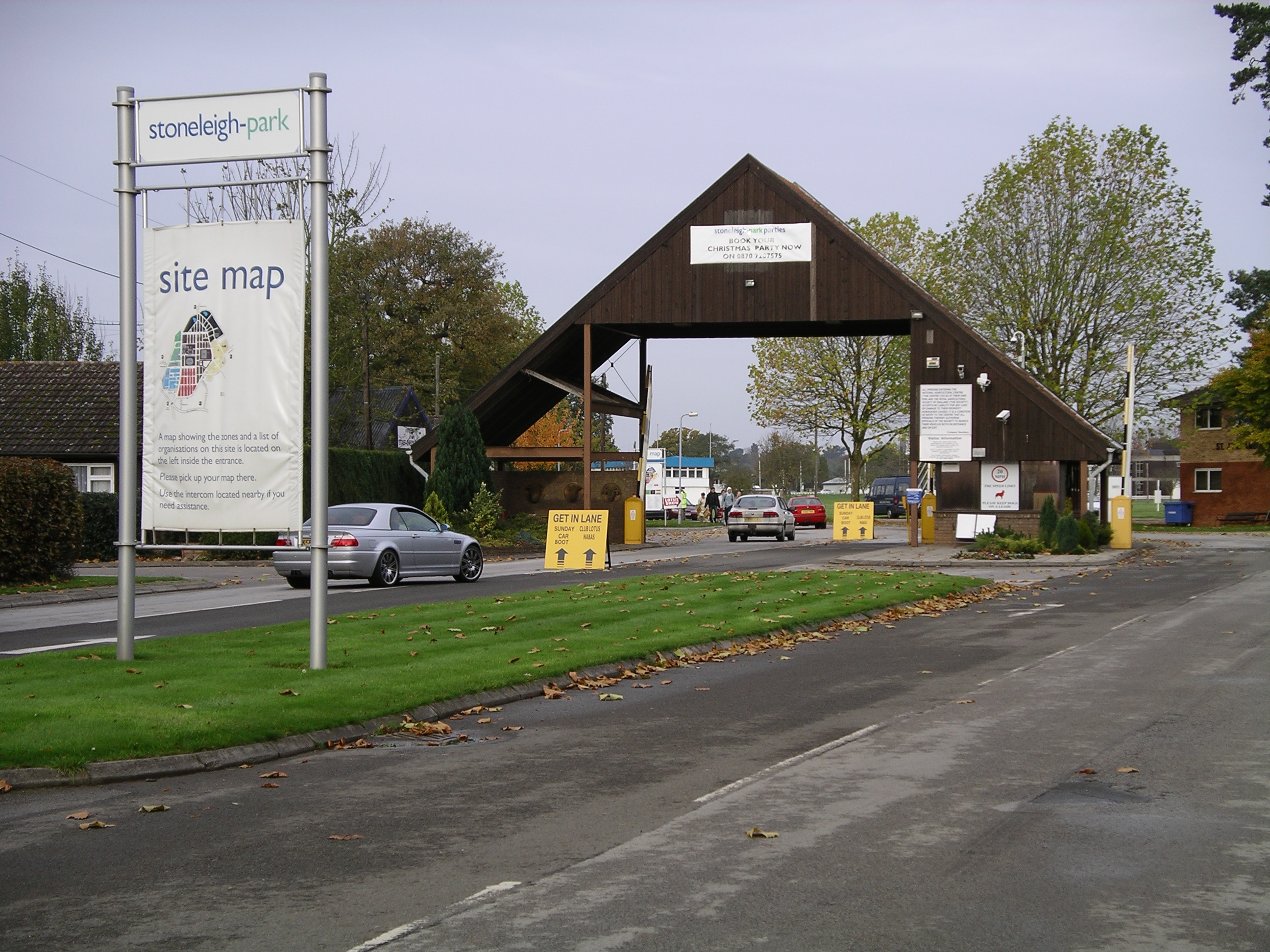|
Norfolk Horn
The Norfolk Horn (also known as Blackface Norfolk Horned, Norfolk Horned, Old Norfolk or Old Norfolk Horned) is one of the British black-faced sheep breeds. It differs from other black-faced breeds, which are mainly found in high-rainfall, upland areas, and from most other modern, lowland British sheep breeds in being lightly built and very hardy. This breed is raised primarily for meat. The Norfolk Horn developed on the sandy heathlands of the Breckland area of Norfolk, England, and is adapted to surviving on poor forage in cool but dry environments. Similar black-faced sheep were formerly more widespread in lowland Britain. The breed is long-legged with black faces and legs. Both sexes have horns, although these are larger in the males. At maturity, a ewe weighs about . The breed is described as "flighty" and is likened to goats in their ability to jump over obstacles such as fencing. It was a popular breed in Norfolk until the middle 19th century, when "improved" breeds such ... [...More Info...] [...Related Items...] OR: [Wikipedia] [Google] [Baidu] |
Norfolk Horn Wether
Norfolk () is a ceremonial county, ceremonial and non-metropolitan county in East Anglia in England. It borders Lincolnshire to the north-west, Cambridgeshire to the west and south-west, and Suffolk to the south. Its northern and eastern boundaries are the North Sea, with The Wash to the north-west. The county town is the city of Norwich. With an area of and a population of 859,400, Norfolk is a largely rural county with a population density of 401 per square mile (155 per km2). Of the county's population, 40% live in four major built up areas: Norwich (213,000), Great Yarmouth (63,000), King's Lynn (46,000) and Thetford (25,000). The Broads is a network of rivers and lakes in the east of the county, extending south into Suffolk. The area is protected by the Broads Authority and has similar status to a National parks of England and Wales, national park. History The area that was to become Norfolk was settled in pre-Roman times, (there were Palaeolithic settlers as early as 9 ... [...More Info...] [...Related Items...] OR: [Wikipedia] [Google] [Baidu] |
Southdown (sheep)
The Southdown is a British breed of domestic sheep, the smallest of the British breeds. It is a shortwool breed, and the basis of the whole Down group of breeds. It was originally bred by John Ellman of Glynde, near Lewes in East Sussex, in about 1800. It has been exported to many countries; it has been of particular importance in New Zealand, where it was used in the breeding of Canterbury lamb. In the twenty-first century it is kept principally as a terminal sire. It is listed by the Rare Breeds Survival Trust among the UK native breeds; it was formerly listed as "priority" or "at risk". History From Mediaeval times, small grey-faced polled sheep were kept on the chalk uplands of the South Downs of the counties of Kent and Sussex in south-east England. From about 1780 John Ellman, of Glynde, near Lewes in East Sussex, began selectively breeding them to improve their productive qualities; there are no records of how this breeding was carried out. By the end of the century ... [...More Info...] [...Related Items...] OR: [Wikipedia] [Google] [Baidu] |
Sheep Breeds
This is a list of breeds of domestic sheep. Domestic sheep (''Ovis aries'') are partially derived from mouflon (''Ovis gmelini'') stock, and have diverged sufficiently to be considered a different species. Domestic sheep breeds Sorted alphabetically. A B C D E F G H I J K L M N O P Q R S T U V W X Y Z Notes See also * List of cattle breeds * List of domestic pig breeds * List of goat breeds * Lists of domestic animal breeds References Sources * * * * * * * * * * * * * * * * * * * * * * * * * * * * * * * * * * * * * * * * * * * * * * * * * * * * * * * * * * * * * * * * * * * * * * * * * * * * * * * * * * * * * * * * * * * * * * * * * * * * * * * * * * * * * * * * * * * * * * * * * * External links Breeds of Livestock - Sheep BreedsDepartment of Animal Science - Oklahoma State University {{Breed List of Sheep Sheep or domestic sheep (''Ovis aries'') are domesticated, ruminant mammals ty ... [...More Info...] [...Related Items...] OR: [Wikipedia] [Google] [Baidu] |
Wiltshire Horn
The Wiltshire Horn is a breed of domestic sheep originally from Wiltshire in southern England raised for meat. The breed is unusual among native British breeds, for it has the unusual feature of moulting its short wool and hair coat naturally in spring, obviating the need for shearing. They are good mothers and have high fertility. History The Wiltshire Horn was until the eighteenth century one of the predominant sheep breeds of southern England. For hundreds of years, it served a clear function on the thin chalk soils of the Wiltshire Downs, requiring little shelter from the elements and providing dung and urine to fertilise the wheat-growing land. At the same time, it provided an easily managed source of quality meat, but the rising price of wool and a general move away from horned sheep had the breed suffer a dramatic decline throughout the 19th and 20th centuries. It was nearly extinct at the start of the 1900s. In 1923, in an attempt to save the breed, the Wiltshire H ... [...More Info...] [...Related Items...] OR: [Wikipedia] [Google] [Baidu] |
Hertfordshire
Hertfordshire ( or ; often abbreviated Herts) is one of the home counties in southern England. It borders Bedfordshire and Cambridgeshire to the north, Essex to the east, Greater London to the south, and Buckinghamshire to the west. For government statistical purposes, it forms part of the East of England region. Hertfordshire covers . It derives its name – via the name of the county town of Hertford – from a hart (stag) and a ford, as represented on the county's coat of arms and on the flag. Hertfordshire County Council is based in Hertford, once the main market town and the current county town. The largest settlement is Watford. Since 1903 Letchworth has served as the prototype garden city; Stevenage became the first town to expand under post-war Britain's New Towns Act of 1946. In 2013 Hertfordshire had a population of about 1,140,700, with Hemel Hempstead, Stevenage, Watford and St Albans (the county's only ''city'') each having between 50,000 and 100,000 r ... [...More Info...] [...Related Items...] OR: [Wikipedia] [Google] [Baidu] |
Aldenham Country Park
Aldenham Country Park is a parkland and woodland, including Aldenham Reservoir. It is now part of the Watling Chase Community Forest, near Elstree, Hertfordshire, England. Aldenham Reservoir was excavated by French prisoners of war in 1795 to help maintain local river levels after the Grand Union Canal was built. It is held as a reserve public water supply. The park supports walking, fishing and sailing activities, has playgrounds, Special Needs Centre and a Disney-backed Winnie-the-Pooh theme area. Since 1984, it has been a centre for breeding rare livestock (one of seventeen Rare Breeds Survival Trust centres in the UK), including Aldenham Longhorn cattle, Bagot goats, Berkshire and Tamworth pigs, and Norfolk Horn and English Leicester sheep The Leicester Longwool is an English breed of sheep. Alternative names for the breed include: Leicester, Bakewell Leicester, Dishley Leicester, English Leicester, Improved Leicester and New Leicester. It was originally developed by 1 ... [...More Info...] [...Related Items...] OR: [Wikipedia] [Google] [Baidu] |
Stoneleigh Park
Stoneleigh Park, known between 1963 and 2013 as the National Agricultural Centre, is a business park located south-west of the village of Stoneleigh, Warwickshire, England. It is home to the Stoneleigh conference and exhibition centre. History The park was once part of the much larger Stoneleigh Abbey estate which was created in 1154 when Henry II granted land in the Forest of Arden to a group of Cistercians monks from Staffordshire. It was separated from the rest of the estate and developed only in 1963 when the Royal Agricultural Society of England decided to permanently base their previous nomadic Royal Show there, after it had been on tour annually since 1839. The popular annual Town and Country Festival started on the site in 1973. In 1978 it hosted the outdoor European Archery Championships, being the first UK venue to do so. 2003 saw the National Farmers' Union of England and Wales move their headquarters to the park.. The Royal Show was held for the last time in 2009 ... [...More Info...] [...Related Items...] OR: [Wikipedia] [Google] [Baidu] |
Rare Breeds Survival Trust
The Rare Breeds Survival Trust is a conservation charity whose purpose is to secure the continued existence and viability of the native farm animal genetic resources (FAnGR) of the United Kingdom. It was founded in 1973 by Joe Henson to preserve native breeds; since then, no UK-native breed has become extinct. It maintains a watch list of rare native breeds of cattle, sheep, pigs, horses, goats and poultry,Rare Breeds Survival Trust watch list accessed June 2016 and an approved list of farm parks.Rare Breeds Survival Trust approved farm parks accessed February 2012 Projects have included the collection of genetic material ... [...More Info...] [...Related Items...] OR: [Wikipedia] [Google] [Baidu] |
Suffolk (sheep)
The Suffolk is a British breed of domestic sheep. It originated in the late eighteenth century in the area of Bury St. Edmunds in Suffolk, as a result of cross-breeding when Norfolk Horn ewes were put to improved Southdown rams. It is a polled, black-faced breed, and is raised primarily for its meat. It has been exported to many countries, and is among the most numerous breeds of sheep worldwide. History The Suffolk originated in the area surrounding Bury St. Edmunds in Suffolk in the late eighteenth century, as a result of cross-breeding when Norfolk Horn ewes were put to improved Southdown rams. They were at first known as Blackfaces or Southdown-Norfolks; the first use of the name "Suffolk" for these sheep dates to 1797. In 1810 it was recognised as distinct breed, but was not known by the present name until 1859. A breed society, the English Suffolk Society, was formed in 1886; a flock-book published in the following year recorded some ewes. By the end of the nineteen ... [...More Info...] [...Related Items...] OR: [Wikipedia] [Google] [Baidu] |
English Leicester (sheep)
The Leicester Longwool is an English breed of sheep. Alternative names for the breed include: Leicester, Bakewell Leicester, Dishley Leicester, English Leicester, Improved Leicester and New Leicester. It was originally developed by 18th-century breeding innovator Robert Bakewell. It is now one of Britain's rarest breeds, categorised as "endangered" by the Rare Breeds Survival Trust, since fewer than 500 registered breeding females remain in the United Kingdom. History Leicester Longwool sheep date back to the 1700s, and were found in the Midland counties of England, originally developed in Dishley Grange, Leicestershire by Robert Bakewell. Bakewell was the foremost exponent of modern animal-breeding techniques in the selection of livestock. The Leicester Longwool in the 1700s was slow-growing and coarsely boned. They now have been developed to gain weight quickly and are fast-growing. Leicester Longwool was one of the first pure sheep breeds introduced to Australia, having ... [...More Info...] [...Related Items...] OR: [Wikipedia] [Google] [Baidu] |
Oklahoma State University
Oklahoma (; Choctaw: ; chr, ᎣᎧᎳᎰᎹ, ''Okalahoma'' ) is a state in the South Central region of the United States, bordered by Texas on the south and west, Kansas on the north, Missouri on the northeast, Arkansas on the east, New Mexico on the west, and Colorado on the northwest. Partially in the western extreme of the Upland South, it is the 20th-most extensive and the 28th-most populous of the 50 United States. Its residents are known as Oklahomans and its capital and largest city is Oklahoma City. The state's name is derived from the Choctaw words , 'people' and , which translates as 'red'. Oklahoma is also known informally by its nickname, " The Sooner State", in reference to the settlers who staked their claims on land before the official opening date of lands in the western Oklahoma Territory or before the Indian Appropriations Act of 1889, which increased European-American settlement in the eastern Indian Territory. Oklahoma Territory and Indian Territor ... [...More Info...] [...Related Items...] OR: [Wikipedia] [Google] [Baidu] |
Horn (anatomy)
A horn is a permanent pointed projection on the head of various animals that consists of a covering of keratin and other proteins surrounding a core of live bone. Horns are distinct from antlers, which are not permanent. In mammals, true horns are found mainly among the ruminant artiodactyls, in the families Antilocapridae (pronghorn) and Bovidae (cattle, goats, antelope etc.). Cattle horns arise from subcutaneous connective tissue (under the scalp) and later fuse to the underlying frontal bone. One pair of horns is usual; however, two or more pairs occur in a few wild species and in some domesticated breeds of sheep. Polycerate (multi-horned) sheep breeds include the Hebridean, Icelandic, Jacob, Manx Loaghtan, and the Navajo-Churro. Horns usually have a curved or spiral shape, often with ridges or fluting. In many species, only males have horns. Horns start to grow soon after birth and continue to grow throughout the life of the animal (except in pronghorns, which shed the ... [...More Info...] [...Related Items...] OR: [Wikipedia] [Google] [Baidu] |








